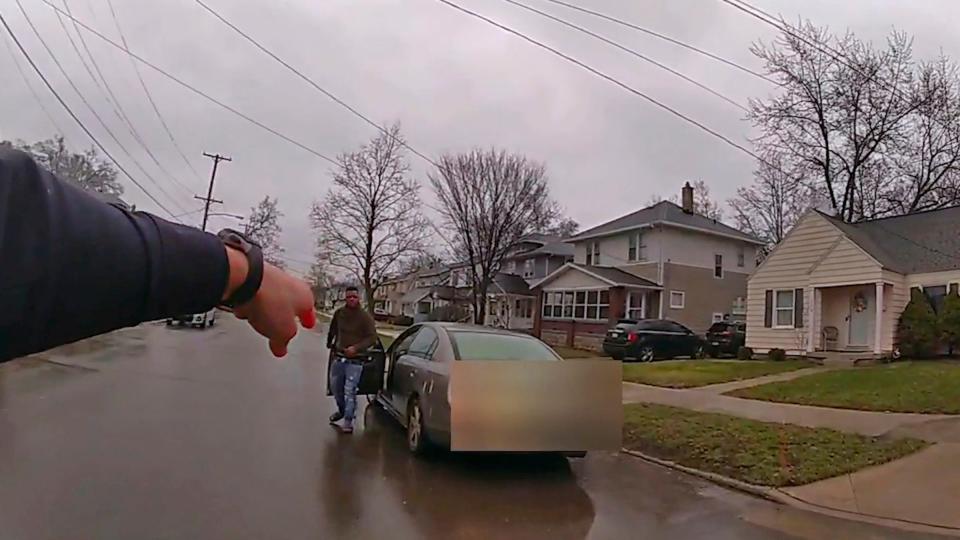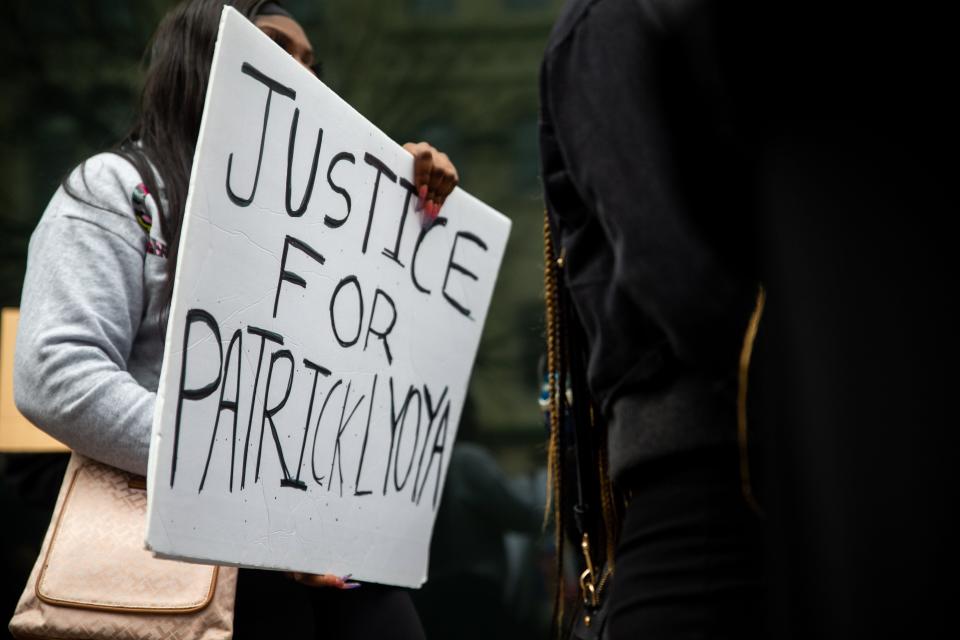Was the cop who shot Patrick Lyoya afraid? Perhaps. But that's not the key question.
In assessing whether the fatal police shooting of Patrick Lyoya, an unarmed Black motorist in Grand Rapids, Michigan, was legally justified, it would be a grave mistake to look simply at whether the officer was scared when he decided to shoot Lyoya in the back of the head. We must examine the officer's decision in context.
This shooting is not an isolated incident. Michigan, like other states, has an ugly history of racial profiling and unjustified police shootings of Black men. Ten years ago, eight police officers in Saginaw surrounded then gunned down Milton Hall, a Black man with a mental disability, even though Hall posed no serious threat to the officers.
Likewise, the ACLU has sued the Grand Rapids police multiple times in recent years for racial profiling.
Right to equal protection
With that background, let’s examine the latest shooting. On April 4, about 8 a.m., a white Grand Rapids police officer saw a young Black man driving. The officer decided to call in the license plate number and determined the plates belonged to another car. We don’t know enough yet to determine whether the decision to run this man’s plates constituted racial profiling. But if he targeted Lyoya because of his race, then he violated Lyoya’s right to equal protection of law.
Patrick Lyoya video: Experts analyze key moments of fatal police shooting in Grand Rapids
Video of the incident shows Lyoya pulled his car over in response to the police sirens and then exited the car. The officer immediately escalated the situation by yelling at Lyoya. When Lyoya did not produce a license and walked toward the front of the car, the officer grabbed him. Lyoya then started to run. The officer chased, tackled and repeatedly struck him to get him to submit.
Many police experts say the officer committed a dangerous mistake by resorting to violence at this point because:
►The motorist was suspected of a low-level infraction.
►The officer was alone and should have waited for backup.
►The officer had control of the car and the passenger in the car who could identify the driver.
►Violent confrontations under these circumstances can lead to needless injury or death.
Documenting police: Patrick Lyoya's killing was caught on video. Here's how to record cops.

According to the video, there is no doubt that Lyoya did not cooperate in his own arrest. But he never attempted to strike the officer or fight back. Rather, after being tackled, Lyoya stood back up and tried again to walk away. Similarly, when the officer tried to use a Taser, Lyoya pushed the Taser down, but he did not grab it and turn it back on the officer.
Step back and deescalate
Once Lyoya stood up after being tackled, the officer could have stepped back to deescalate and wait for backup. However, the officer appeared frustrated and determined to make Lyoya submit to his authority.
I don't watch police brutality videos. This story is too real and change too far off.
The officer again forced Lyoya to the ground face down and mounted his back. When the officer again tried to use his Taser, Lyoya held the Taser back to avoid being struck. The officer responded by taking out his pistol and shooting Lyoya in the back of the head at point-blank range in what looks on the video like an execution.
Was the shooting justified? Absolutely not.
The Supreme Court in 1985 ruled that a police officer may not shoot a fleeing felon unless there is probable cause to believe he poses an immediate threat of serious physical injury to the officer or others. In 1989, the Supreme Court held that an officer uses excessive force if the force used was "objectively unreasonable" after balancing the severity of force used against the governmental interests at stake. In making this determination, courts look at all the facts, including the severity of the crime, whether the suspect poses an immediate threat to the safety of the officers or others, and whether the suspect is attempting to evade arrest by flight.

In this case, Lyoya was not suspected of committing a violent crime; he was simply suspected of having the wrong license plate on his car. Although he ran from the officer when the officer tried to grab him, at the time he ran, he posed no risk of harm to the officer or others.
The officer created the danger
Rather than deescalate the situation and wait for backup, the officer created the danger by trying to subdue the man with physical violence and a Taser. And when that did not work, he used the ultimate force by killing Lyoya with a shot to the back of the head.
Even if you ignored all the mistakes the officer committed before he fired his gun, the shooting was unjustified. Was the officer scared when he fired the gun? Perhaps. But that’s not the question.
Our View: Grand Rapids police shooting shows why cops should avoid minor traffic stops

The question is whether he reasonably feared that Lyoya would either kill him or cause serious physical harm. Looking at the video evidence available, it appears that all Lyoya wanted to do was get away from the officer, not hurt the officer. While such action constitutes resisting arrest under Michigan law, it is not a crime punishable by death.
Michael J. Steinberg is a professor from practice and the founding director of the Civil Rights Litigation Initiative at the University of Michigan Law School. Before joining the faculty, Steinberg served 22 years as the legal director of the American Civil Liberties Union of Michigan.
This column is part of a series by USA TODAY Opinion about police accountability and building safer communities. The project began in 2021 by examining qualified immunity and continues in 2022 by examining various ways to improve law enforcement. The project is made possible in part by a grant from Stand Together, which does not provide editorial input.
You can read diverse opinions from our Board of Contributors and other writers on the Opinion front page, on Twitter @usatodayopinion and in our daily Opinion newsletter. To respond to a column, submit a comment to letters@usatoday.com.
This article originally appeared on USA TODAY: Patrick Lyoya: Fear not enough to justify Grand Rapids police shooting

